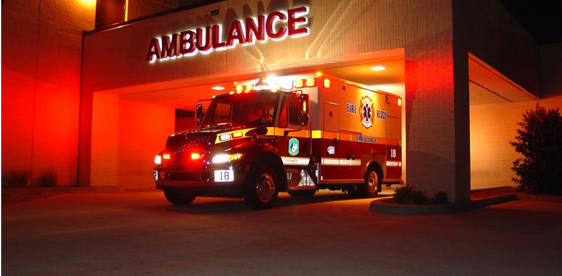Wallstreet Running Ambulances: Privatization of Emergency Medical Services

(Source)
Some services are inherently seen as the responsibility of the government rather than a profit-generating opportunity. When we think of public services, certain stereotypical functions come to mind. National parks, public utilities like water, and local police forces are examples of services that are traditionally “public,” but have been privatized to different extents. This may stem from incentives to make management more efficient or financial pressures on local municipalities. Other public services have had private counterparts to accommodate differing preferences. For example, There is a long history of private schools and public-school working in tandem to teach pupils.
There has been a spike in the privatization of public services since the economic recession in 2008. With the privatization of goods and services comes cost-minimizing and profit-maximizing techniques implemented in the private sector. As one can imagine, privatization can drastically change how a good or service is provided to the general public. For example, Emergency Medical Services (EMS) extend from ambulatory organizations to branches of the fire department and are seen as a stereotypically traditional “government” service. However, private equity investors starting from the early 1990’s—booming during the 2008 recession—have invested heavily in the industry in efforts to privatize the service.
While municipalities struggled during the 2008 recession, private equity investors, in particular, were apt to take charge of EMS services. With proper oversight, the EMS industry has great potential to generate a profit due to the increasing cost of health care services in this country and the essential need for the service. However, private equity firms are under immense pressure to generate as much profit for their clients as possible, which results in implementing aggressive cost-cutting techniques to their investments. In an industry that is focused on providing help to individuals in their most vulnerable time, investors’ interests begin to clash with the individual need for quality medical care.
The appeal of privatizing EMS services, as with most industries, is understandable—competitive markets would result in the same, if not better, quality of care for lower costs. EMS is seen to be particularly targeted because large companies would be able to use their existing resources to minimize management, thus resulting in savings to the taxpayer, while companies’ profits remain high since the bill is sent to a patient’s insurance. Depending on the city and county size, local governments can save millions due to the expense of emergency medical equipment, training, and the general cost of liability. A study determining the cost savings for Los Angeles taxpayers found that outsourcing EMS could reducing EMS costs by $15 million. It is hard to scrutinize significant tax savings when a select group only feels the detrimental effects.
However, local governments must look far beyond the financial incentives due to the nature of the industry—the result of declining patient care can be fatal. A New York Times investigation found that privatized EMS services in larger metropolitan areas have slower response times, less equipment, and under-trained staff compared to their previous public structure. The tactic implemented by private EMS services was to have fewer responders covering a larger radius, which resulted in a delayed response time. In their investigation of TransCare, cost-cutting techniques were used that encouraged EMS staff to replenish their supplies from the local hospital emergency room—refilling on only the ER’s excess supply. This led to TransCare working with faulty heart monitors and expired medication.
The risk posed by a privatized EMS is exacerbated when municipalities solely rely on companies to serve their constituents. In the case of TransCare, mismanagement had led the company to bankruptcy. With court-ordered trustees managing the business, the quality of patient care spiraled downwards. The Mayor of Mount Vernon, New York—who had contracted with TransCare—classified the bankruptcy as a threat to public safety. Rural/Metro, one of the nation’s largest privatized ambulance and fire department companies, underwent several scares of bankruptcy. During the company’s turbulent time, extremely aggressive collection tactics and massive reduction of ambulances was implemented. Loudon County classified the privatization contract with Rural/Metro as endangering the health and welfare of its citizens. During the company’s bankruptcy proceedings in 2015, they reported to be late 9.4% of the time. Typically, cities in more rural or low-income areas, where the local government is financially burdened, feel the effect of the declining patient care most. While the impact is widespread, it disproportionately affects specific demographics much more.
Privatization is generally seen as a way to create efficiencies and cut costs. This is accomplished by providing the good or service in a competitive marketplace, where firms will compete with each other by providing a higher quality product for lower prices. However, privatization, specifically through private equity investors, changes the relationship between EMS and the general public. The goal of the service is shifted from saving lives to generating a profit. Negative externalities, such as delayed patient care, are created with the shift of the “seller’s” goal. This gap may be a byproduct of the framework of EMS itself as the consumer does not have the luxury of choosing a certain provider over another. This framework creates a disconnect as municipalities are in the decision-making position, while the patients are the tertiary recipients of the service without any power. Thus, consumers are not able to influence the market with their preferences directly.
With policymakers accepting the fact that privatized EMS have had a detrimental effect in various cities and counties, victims of delayed services are not being compensated for the additional injuries suffered. A victim is not able to be compensated in cases regarding wrongful death or negligence. Tort law does not extend liability in such scenarios because there is no link of direct causation. In situations where EMS is called, the individual is already in a state of duress due to a primary event. In order for liability to extend to an EMS agent or corporation—a secondary party in the scenario—there must be some gross deviation from the typical customs and practices in the industry to show negligence. Even then, courts are generally reluctant in holding medical professionals liable in cases that are based on a patient’s “loss of chance of survival.” Due to the burden resting on the victim to show negligence, the pressure is greatly reduced on EMS providers.
While a legal solution will be much slower to develop, a policy approach may help reduce future incidents from occurring. A high-performance EMS model has started to gain traction in several cities that were unsatisfied with a fully privatized approach. As a result, jurisdictions have been able to see the intended goal of privatizing EMS, lower costs with a higher quality of patient care. The model is focused on a partnership between the private and public sectors. Essentially, the public sector outsources specific roles within the service to private companies—particularly, outsourcing the more expensive roles, such as paramedics and higher-skilled firefighters. For example, ambulances are equipped with paramedics and EMTs, with paramedics being paid almost 30% more. Additionally, municipalities would select competitive private EMS companies to run alongside public services. By doing so, a baseline of quality patient care is created because the municipality is not solely dependent on a handful of companies. This approach sits as a midway point, allowing cities to save money while assuring that public safety is not jeopardized.
 Azzam Chaudhry is a second-year law student at Cornell Law School. He is originally from Irvine, California and received his B.A. in Economics and Government from American University. He enjoys writing about policy, specifically the relationship between the public and private sector.
Azzam Chaudhry is a second-year law student at Cornell Law School. He is originally from Irvine, California and received his B.A. in Economics and Government from American University. He enjoys writing about policy, specifically the relationship between the public and private sector.
Suggested Citation: Azzam Chaudhry, Wallstreet Running Ambulances: Privatization Of Emergency Medical Services, Cornell J.L. & Pub. Pol’y, The Issue Spotter, (Oct. 28, 2019), http://jlpp.org/blogzine/moving-the-trolls-out-of-texas/.
